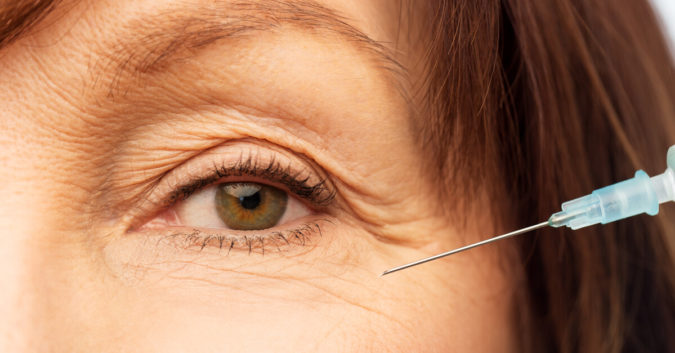Relatively new to the drug market, Beovu® (brolucizumab) was approved by the U.S. Food and Drug Administration (FDA) in 2019 to treat age-related macular degeneration, a common condition also known as wet AMD. In patients who suffer from wet AMD, abnormal vessels behind the retina begin to leak blood, lipids, and fluid.
According to a recent safety review, patients with wet AMD who were treated with Novartis’s Beovu are at increased risk of developing vision-threatening conditions after receiving treatment.
Beovu is an injectable drug administered inside of the eye. It is intended to suppress the growth of abnormal blood vessels. However, since its introduction to the market, the FDA has noted several adverse events reported from patients treated with Beovu, including, most notably, retinal vasculitis and/or retinal vascular occlusion.
Other reported side effects of Beovu include:
- Blindness
- Blood clots
- Blurred vision
- Eye redness
- Intraocular inflammation
- Retinal artery occlusion
- Retinal detachment
- Retinal swelling
- Retinal vein occlusion
- Sudden vision loss
In June 2020, Novartis updated its drug warning label to include a risk for retinal vasculitis and retinal vascular occlusion. The label update came shortly after the American Society of Retinal Specialists (ASRS) issued a warning that identified cases of intraocular inflammation, some of which led to severe vision loss, in patients being treated with Beovu.
Conducting its own safety review, Novartis assessed the data of 12,000 patients who received Beovu injections. As a result, the overall risk rate for retinal vasculitis and/or retinal vascular occlusion jumped from 0.46% to 3.97%.
Unfortunately, Beovu’s updated warning label may have come too late for thousands who have already received injections of the drug.
Elmiron, a prescription used to treat a bladder condition called interstitial cystitis, has also been linked to risks of macular degeneration and vision loss.
Wet AMD: A Growing Problem
In the United States, as many as 11 million Americans suffer from wet AMD. The market to treat AMD is already among the drug industry’s most competitive and continues to grow. Novartis sees the potential for a big money-maker with Beovu — a drug that is expected to compete with Roche’s Lucentis® and Regeneron’s Eylea®, which rake in billions of dollars in sales each year.
According to a report by Reuters, Novartis has “touted” Beovu as a blockbuster, hoping to make at least $1 Billion each year from the drug. The company has yet to reap such profits — partially because of the newly identified safety concerns. Ophthalmologists may feel more comfortable administering one of Beovu’s competitors, which have been on the market longer.
As the U.S. population ages, experts expect the American market for wet-AMD drugs to double by the year 2050. Novartis’s label update will play an important role in shaping how future patients suffering from wet-AMD and their doctors decide to treat their condition.
In spite of the warning issued by the ASRS, the adverse events reported to the FDA, and the updated warning label, Novartis stands by the efficacy of Beovu.
In a statement, the company said, “Novartis is confident that Beovu continues to represent an important treatment option for patients with wet AMD, with an overall favorable benefit/risk profile.”
Moving Forward with a Beovu Lawsuit
While Novartis took an important step to update their warning label to include potential adverse vision-related issues, for some, the warning comes too little too late.
Beovu lawsuits may mount in the near future as more patients step forward to report adverse, life-altering side effects.
If you or a loved one received a Beovu injection and were diagnosed with retinal vasculitis, vascular occlusion, or experienced significant vision loss, you may be eligible for compensation from a Beovu lawsuit.
All brands are trademarks of their respective companies.
